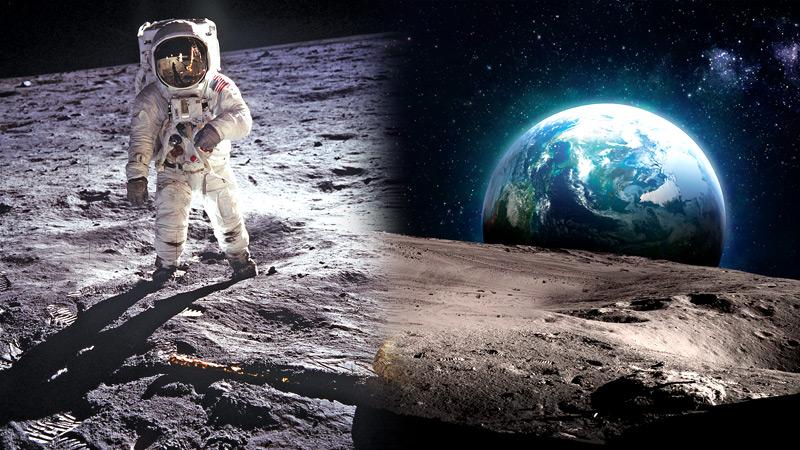
With the recent success of its Moon mission, India has made its status as a national superpower in space clear for the world to see. This achievement has once again sparked public interest in space exploration, making it worth re-examining the intense and highly competitive origins of the world’s foray into space, the Space Race.
 An extension of the 20th century’s Cold War between the United States and the Soviet Union, the Space Race was a mad dash by the two international superpowers to achieve complete superiority in space travel. While the motivations behind each faction’s space programs weren’t for the sake of pure intellectual advancement, the Space Race pioneered the rapid development of a great many technologies that helped bring the world into the modern age.
An extension of the 20th century’s Cold War between the United States and the Soviet Union, the Space Race was a mad dash by the two international superpowers to achieve complete superiority in space travel. While the motivations behind each faction’s space programs weren’t for the sake of pure intellectual advancement, the Space Race pioneered the rapid development of a great many technologies that helped bring the world into the modern age.
The roots of the Space Race extend back to the 1930s, thanks to Germany’s innovative experiments with rocket-propelled artillery as a result of the restrictions placed on them by the Treaty of Versailles.
Scientists such as Wernher von Braun, a prominent figure in rocket development, spearheaded advancements in rocket technology during World War II. This progress led to the creation of significant military hardware, setting the stage for the creation of the world’s first practical ballistic missile, the V2 rocket. After WWII, many of these German scientists were recruited by the US and Soviets for their respective intelligence programs, Operation Paperclip and Operation Osoaviakhim.
Military objectives
The immediate post-war period saw both superpowers prioritize the development of ballistic missiles for military purposes. The US and the USSR were driven by military objectives, seeking ways to deliver nuclear payloads across vast distances. The advancements in rocket technology during this period laid the foundation for the subsequent achievements in space exploration, though it was yet to be even considered.
On October 4th, 1957, the Soviets stunned the world by successfully launching Sputnik 1, the first artificial satellite, into orbit. This achievement demonstrated their capability to launch intercontinental ballistic missiles and raised concerns for the US, which forced them to realize they were lagging behind.
Sputnik 2 followed, carrying the first living passenger, Laika the dog. Subsequent Soviet missions showcased advancements in spaceflight endurance and spacewalks. However, the Soviets’ focus on militarized goals led to certain design compromises, hindering the reliability of their spacecraft.
The US faced setbacks in its early attempts to catch up with Soviet achievements. The Navy-led Vanguard rocket project faced several failures. However, through projects like the Mercury and Gemini programs, the US gradually caught up. In 1961, Soviet cosmonaut Yuri Gagarin orbited Earth, making him the first human in space. The US response came in the form of Alan Shepard’s suborbital flight and later John Glenn’s orbital mission, both under Project Mercury. With the development of the larger Gemini capsule, the US refined spaceflight techniques and prepared for more complex missions.

With President John F. Kennedy’s vision, the US set its sights on landing a man on the Moon by the end of the 1960s. The Apollo program was born, leading to the famous Apollo 11 mission that successfully landed Neil Armstrong and Buzz Aldrin on the lunar surface. Six more Apollo missions followed, each contributing valuable scientific data and experience. The Soviet Union faced numerous challenges in its lunar efforts, including the loss of visionary scientist Sergei Korolev, financial constraints, and technical issues with the N1 rocket.
Apollo-Soyuz test project
In 1975, the US and the USSR symbolically ended the Space Race when they embarked on the Apollo-Soyuz Test Project, marking the beginning of their collaborations in space. The project involved the docking of an American Apollo command module with a Soviet Soyuz spacecraft, fostering goodwill and scientific exchange.
Despite this cooperative spirit, both nations faced challenges in their respective space programs. The US developed the Space Transportation System (Space Shuttle) for greater reusability but faced tragedies with the Challenger and Columbia disasters, with NASA eventually retiring its Space Shuttle program. The Soviets introduced the Buran Shuttle but struggled due to the collapse of the Soviet Union.
Though the Space Race’s historic and competitive period of development petered out with time, interest in space exploration has far from stagnated, with international collaborations, and private companies picking up where it left off, making advancements and keeping up humanity’s dream of one day traveling the stars.
